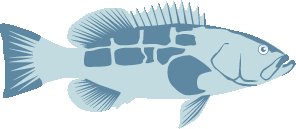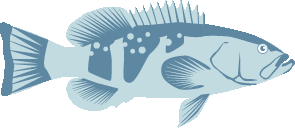Overview
Red grouper and black grouper are two of the main target species for the mixed demersal fishery in the Bank of Campeche, located to the north of the Yucatan Peninsula in the Gulf of Mexico. This seasonal fishery is of high social importance, given that more than 10 thousand families depend on it for their livelihood.
Currently, the red grouper stock is below its limit reference point, and there is much to do to improve management strategies to effectively regulate fishing effort and catch levels so that the species may recover. This project aims at achieving a certifiable status against the MSC standard by collaborating with governmental and private stakeholders to develop and implement a consistent recovery strategy (complete with effective data collection, monitoring and control), and an adequate research plan to close information gaps on the fishery and its interaction with other ecosystem components.
For more information on improvement activities, please visit: CeDePesca's Mexican Grouper FIP Public report (updated quaterly).
Red grouper and black grouper are two of the main target species for the mixed demersal fishery in the Bank of Campeche, located to the north of the Yucatan Peninsula in the Gulf of Mexico. This seasonal fishery is of high social importance, give
- To have an adequate Management Plan adopted based on the best scientific information available by December 2026.
- To have a consistent recovery strategy adopted for the Mexican grouper stocks, including measures aimed at reducing fishing effort and setting catch quotas by December 2026.
- To help improve the fishing registry and the traceability of fishery production by December 2026
- To help define an adequate Research Plan that includes data collection on target and non-target species, and on the impact of the fishery on other ecosystem components by February 2020. [Completed]
- To help establish participatory mechanisms that allow fishery stakeholders to participate in both data collection activities and the assessment of the Management Plan's performance by December 2026.
FIP at a Glance
| 32% | 54% | 14% |
This pie chart represents completed environmental actions. Non-completed environmental actions may contain completed sub-tasks that are not illustrated here. For more information on environmental action progress visit the Actions Progress tab.
- Complete
- Incomplete
Roundtable


